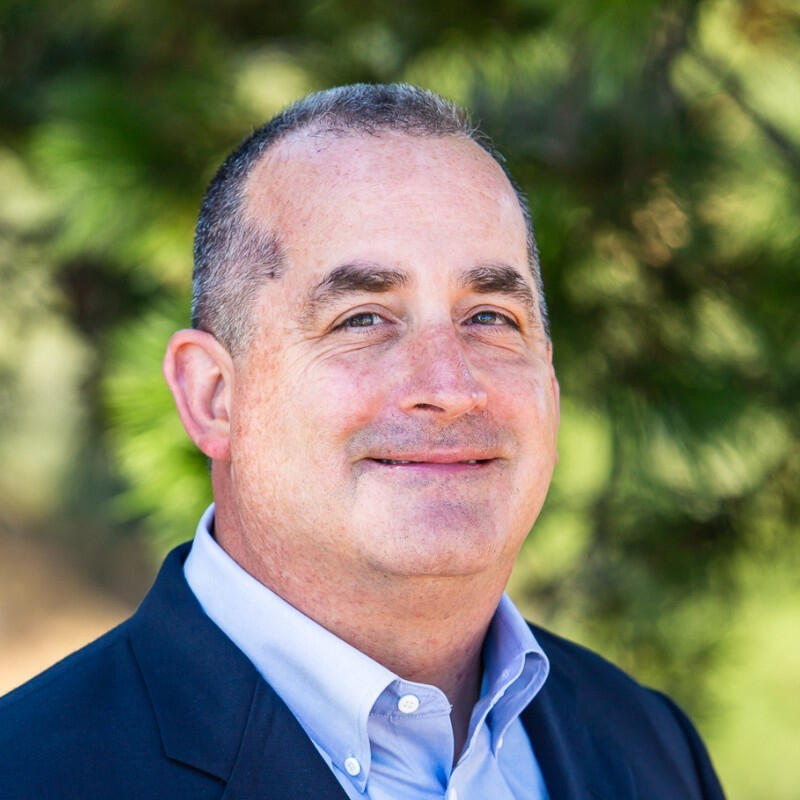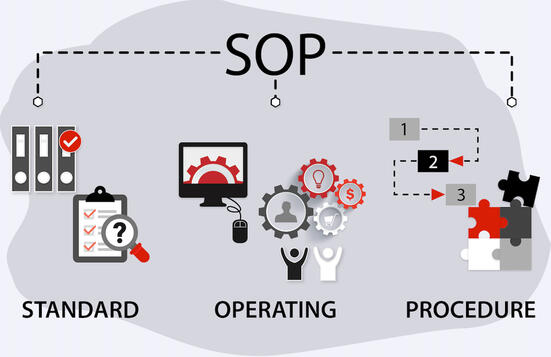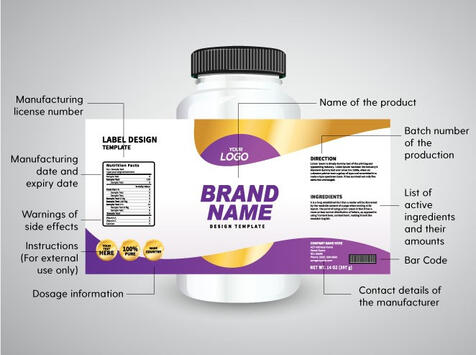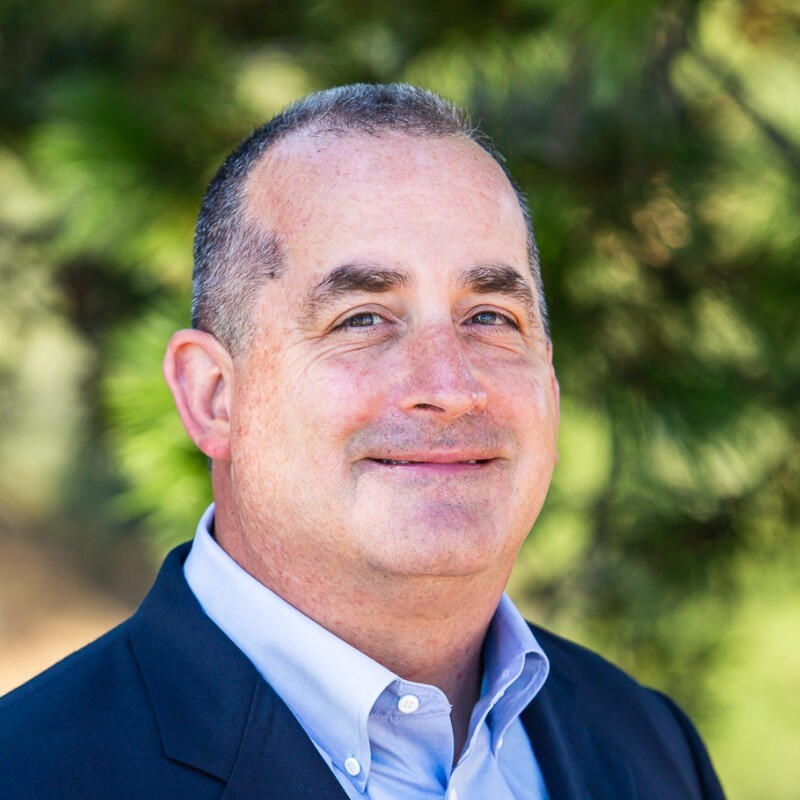Your Trusted Partner in Life Sciences

Ohms Consulting specializes in providing comprehensive services to the pharmaceutical, biopharmaceutical, and medical device industries. We offer tailored solutions spanning the entire product lifecycle, with core competencies in clinical trial material planning and execution, investigational supply material management, collaboration with clinical packaging contractors within the US and internationally. Additionally, we excel in orchestrating commercial supply chain operations, covering manufacturing through serialization and distribution.
OUR MISSION
At Ohms Consulting, our mission is to guide clients through the complexities of the life sciences industry. Based in the San Francisco Bay Area, we provide tailored solutions that optimize efficiency and drive success across the product lifecycle. With a focus on excellence, integrity, and innovation, we are committed to being the trusted partner that transforms challenges into opportunities for growth and advancement.
OUR VISION
Our vision at Ohms Consulting is to be the foremost provider of comprehensive consulting solutions, guiding and empowering our clients at every stage of the product lifecycle. From meticulous planning and execution of clinical trial materials to optimizing commercial supply chain operations, we are committed to ensuring seamless processes, unwavering regulatory compliance, and unwavering standards of quality.
CHRISTOPHER OHMS
Christopher Ohms, a native of the San Francisco Bay Area, has a rich background in a spectrum of operational roles. His expertise spans across pharmacy processes, quality assurance, project management, research and development, commercial operations, manufacturing, clinical and commercial packaging and labeling, supply chain management, sales and operations planning, as well as global oversight of clinical and commercial contracted relationships. He brings a wealth of experience and a comprehensive skill set honed through diverse roles within these domains.

ARTICLES
SERVICES

SOP Development in Compliance
Develop SOPs aligned with
cGMPs, ICH, and global
guidelines for compliance.

Pharmaceutical Packaging and Labeling
Develop compliant label copy,
coordinate proofing for
regulatory-compliant labeling.

Clinical Trial Material Planning
Implement strategies for
seamless trial operations,
overseeing their effectiveness.

Commercial Supply Chain Operations
Optimizing commercial supply
chain for efficiency and
regulatory compliance.

Collaboration With Clinical Packaging Organizations (CPOs)
Collaborate with global
contractors for efficient clinical
packaging and labeling.

Investigational Supply Materials Management
Ensure timely availability of
investigational supply, meeting
regulatory and quality
standards.
CHRISTOPHER OHMS
Christopher Ohms, a native of the San Francisco Bay Area, has a rich background in a spectrum of operational roles. His expertise spans across pharmacy processes, quality assurance, project management, research and development, commercial operations, manufacturing, clinical and commercial packaging and labeling, supply chain management, sales and operations planning, as well as global oversight of clinical and commercial contracted relationships. He brings a wealth of experience and a comprehensive skill set honed through diverse roles within these domains.

Welcome To Ohms Consulting
Your Trusted Partner In Life Sciences
4 Skills An Exceptional Project Manager
Published: December 6, 2023
Author: Christopher Ohms
Project manager can mean many different things to many people. To some it means passing a Project Management Institute (PMI) accredited test and being knighted into project management. To others it means running cross-functional meetings, issuing and following up on minutes and action items, and managing GANTT charts. And to others it means meeting key project milestones and budgets. Well, it is likely all of these and much more.A good project manager is tactical and strategic in their philosophy and actions. They shepherd or drive a project. But the better project managers respect the interplay of the functional areas in a project, endeavor to learn about the nuances of each department, and perform as a partner in the project. An exceptional project manager learns and tries to understand the key drivers and helps to socialize complex tasks into smaller bite-size nuggets and represent the team as a sterling captain.To avoid repeating the construct defined by the PMI and Project Management Body of Knowledge (PMBOK), and assuming the project manager has a foundation of this knowledge, below are four features of an exceptional project manager. These include (1) earnest respect of others, (2) knowing when to speak and let others speak, (3) understanding the details driving the project, and (4) taking the time to self-assess and maintain focus.1. Respect For OthersUsing a stopwatch approach in meetings and being terse to others in the spirit of managing a project is inappropriate and should be avoided. Managing a team requires a velvet touch. All projects consist of people working to produce a unique product or service. The moment a project manager imposes over-bearing principles and techniques to keep things moving, they will typically lose more than they gain. People process things at different rates and with different base understandings. It is important to keep the team aligned and moving, but it is equally important to respect the range of the team’s familiarity with and understanding of the project’s aspects. For example, when dealing with contracted organizations over the phone or in a Zoom meeting, you may need to give people a bit more time to explain an update or respond to a question rather than adhering to a rigid schedule. Interrupting somebody or stopping them in the middle of an update is off-putting to the speaker and it ripples through the other participants.In my past, I can think of three individuals who either led project management groups or were project managers themselves who were rude in meetings, rolled their eyes when team members asked questions, or ignored feedback from the team to preserve an impossible end goal to make them look good (for a fleeting moment) to senior management. Additionally, an experienced EVP reveled in disruptive, disrespectful, and bully-like actions to “manage” projects. Some of these behaviors are subtle and others less so by design. These individuals were better suited to the back office rather than in project management.2. Knowing When To IntercedeHave you ever been on a team where the project manager speaks over the subject matter experts (SMEs) to preserve a highly prescriptive agenda in terms of topic and time? Sometimes meetings take various twists and turns, and discussions can lead to new discoveries. If the meeting is based around exploratory research or technical matters, these technical discussions are often given time allowances. When the project manager recognizes the meeting may be changing, it is important to acknowledge the shift and assess whether another meeting needs to be scheduled or the current meeting needs to be extended. One of the most enabling things to do is to stop the natural dialogue and not pick up the pieces.For example, in a meeting between a sponsor and contractor largely focused on CMC-related discussions, there was a good dialogue between the members of the scientific team. Given that the attendees consisted of a technical team, they wanted to continue these scientific/technical discussions; however, the PM wanted to hold to the agenda, which included other topics. The PM kept needling the technical team to finish so these other topics could be covered. What the PM did not and could not understand is the technical discussions were leading to an innovation in the formulation and process chemistry that would prove to be profound for the project.3. Recognition That Details Drive SuccessesIt is completely acceptable and reasonable not to know everything about all details within a project if you have a specific role on the team. However, the more a project manager can learn and expand their knowledge about the project and what goes into accomplishing the targets, the better they can manage the outcome. This open-minded approach will serve a tactical end goal and form the building blocks of strategic measures. For example, as a project manager assesses the effort and cycle time to complete a repeated task, they may see an area for improvement in future projects. For example, if the issuance of a purchase order for a part or service requires a multitude of approvers regardless of cost and this hinders project deliverables, they may suggest a stratified approval process based upon value. Further, if the project manager sees a gap in how or when a technical decision is required, they may see opportunities/risks to execute some tasks in parallel or serially to meet the project’s goals.As part of preparing investigational medicines, companies need to generate a label to be placed on the primary and/or secondary packaging containing the investigational supplies. This is generally a two-step process that involves developing label copy and then proofing it. Approving the copy typically involves several different functional groups, and in the absence of a sophisticated e-document system, having the necessary people sign the documents can involve a paper chase. A project manager I worked with saw this inefficient process and took a different approach to the task. The solution was to schedule a meeting with all the reviewers, with all the relevant guidances, clinical protocols, etc., at the meeting for reference. In the meeting, all team members could review and discuss the text elements and tease out questions. If any changes were required, the label copy could easily be modified and reprinted and returned to the room for approval; the review of the copy was real-time and collaborative.4. Checking Your Work And Maintaining FocusAs much as projects are progressively elaborated, it is good if a project manager checks their own work. It is never a good defense to hide behind being a “scientist” or “mathematician” or “engineer” to act or behave in a particular manner or avoid the possibility of being better. An exceptional project manager rises above these monikers. Equally, the lack of academic or professional credentials is not an acceptable excuse for being mediocre. The team and the organization employing the project manager expect and deserve an individual who strives to improve on each project. It means something to set the expectations and hold to them. This is much more than starting/ending meetings on time or issuing meeting and action items within 24 hours of a call. It means ensuring what you have is accurate and clear for the team working on the project.The PM or lead is ultimately responsible for the success or failure of meeting the deliverables. If something should have been put onto an airplane to expedite a delivery and it was put onto a barge instead, thereby delaying the delivery, the PM is responsible. While the PM may not be an expert in shipping logistics, they need to look ahead, identify pinch points, and provide a forum to discuss solutions. When the proverbial ship has sailed on a task that could result in a delay, they need to get creative in finding a solution. In one situation, I used FedEx to ship some investigational product in winter. The box was stuck at a holding depot due to inclement weather. Because the medication needed to get to the patient, I dispatched a special courier to retrieve the box and hand-carry it to its destination. Did the shipment end up costing more than planned? Yes. But the cost of a patient not getting their medication was greater.ConclusionMost projects in the biopharmaceutical and biotechnology space are centered around making a better deliverable to help patients; this could be producing a component for a medical device, overseeing the steps leading to a new piece of equipment, or manufacturing active pharmaceutical ingredients. It is important for a project manager to keep the project deliverables in mind and how the result can ultimately help the patient. Individually and collectively, having respect for others, knowing when to speak and let others speak, understanding the project, and continuous self-assessment help sculpt exceptional project managers. When the combination of these intrinsic skills is coupled with the formal approaches of project management, the results can be pleasantly rewarding.
Clinical Trials
Published: December 6, 2023
Author: Christopher Ohms
Imagine a scenario: It is Friday morning, and you are managing a handful of clinical trials around the world. These trials all use the same therapeutic investigational product (IP). The IP was sent to a clinical packaging organization (CPO) as britestock (unlabeled) IP. To support these trials, you need to have more IP labeled and distributed as swiftly as possible to support additional site initiation visits (SIVs) in three foreign countries; fortunately, you have approved label copy on file with the CPO. Before you have the CPO execute any work, you need an approved scope of work (SOW). Given that you have an ongoing relationship with the CPO, and you have reserves of britestock IP residing in their inventory, there should be little reason to be concerned about having more IP available by mid-next week. After all, that is their core competency.Reality: There is likely no way the IP will be available within this timeframe. More likely, nobody you trust or have worked with can meet this aggressive schedule. And certainly not a CPO that is trustworthy, GMP compliant, and with capacity, which is likely what clinical supply people expect. But what is the barrier to meeting this conceivable request? The short answer is the lack of innovation and technology at the CPOs. It is not as if the innovation and technology do not exist; it is simply not in use by many CPOs.
Leading The Field Through Innovating
When you assess other industries and companies like Amazon, Tesla, IKEA, and Coca Cola, each has a commanding use of innovation and technology to ensure they have what they need, when they need it, and that how it gets from pick-to-pack is swift and error-free. Some may say, “but they are not required to follow the GMPs” or “we work in a highly regulated industry.” To those who present this argument to follow the old ways, I say this an excuse. The clinical supplies community is generally conservative, cautious to adopt new thinking, and slow to change.There are others, too, who will argue the need is not there for this technology to be implemented. And to those I would say, the CEOs of Daimler AG, Ford, and Honda likely scoffed at Tesla’s drive (pun intended) to create an e-vehicle; now these other automakers are following Tesla’s lead. Tesla innovated the space and now the competitors are following. Tesla has not only innovated the mass-production of an e-vehicle, but it innovated material sourcing, fabrication, assembly, and the integration of robotics in much of its processes. Further, it created a solar farm at its Nevada plant — considered one of the largest in a company — so it could use less fossil fuel to run its operations.Many more people today are familiar with on-demand customer service because of Amazon, a company that was founded nearly 30 years ago. It is not that Amazon created on-demand or order fulfillment services, but it innovated how do it better than most. Jeff Bezos, the founder of Amazon, embraced technology and innovation in the warehousing operations to keep up with demand of online orders, order shipments, etc. Customer service is at the forefront of the innovative approaches used by Amazon. More products, even fresh items in certain areas, are capable of being delivered the same day or the next day when ordered online. These range from a box of fresh eggs (delicate by nature) to a 200-lb generator.
How Existing Technologies Can Get Your IP Where It’s Needed
It’s now Friday afternoon and you still have not heard back from your business or project managers about what you need to support these SIVs; they have been at an all-day off-site meeting and likely checking emails/phone messages intermittently. You were not able to reach anyone at the CPO and you are going to have to remember to jump on this issue first thing Monday morning. In this stressful scenario, how could innovation really help?To start, there could be an online portal much like an online menu. Just as you can place a Starbuck’s order online or by using the app, you would use the CPO’s app to request more IP to be labeled, stored, and shipped. The approved SOW establishes the baseline for you to transact the requested services. You create the order and it’s sent to the CPO. An acknowledgement of receipt is sent back to you and an auto-alert is sent to the project manager and business managers at the CPO as well as the other relevant departments involved. Within seconds, you are given the time when your order will be ready — much like a cup of coffee, customized to your specification. The CPO begins to make your order.The britestock IP is pulled from the warehouse shelves using a robot crew, country-specific labels are created on-demand and mechanically applied using a smart system. Once labeled, the IP are placed inside a shipping box pending your release. Any surplus labeled IP, had you requested them, are stored in the warehouse for subsequent shipments. The electronic batch records (EBRs) are sent to your team as identified on the SOW; the EBRs are not sent in a couple of days but in just minutes from the execution of labeling. There are no handwritten entries; everything is in the secure cloud and you have access to it as an existing customer. The EBRs are compliant and so is the electronic system.Once your team has released the IP, the bill of lading, packing slip, and any other documentation you requested are included in the shipping box. This is all centralized, electronic, time-stamped, and visually verified by a smart system at the CPO. The correct IP is labeled, released, inspected, and prepared for shipment. FedEx or an alternate carrier is contacted by the CPO to pick up the IP, and away it goes to the sites. The whole process, from SOW generation through IP label/release, takes place in hours, not days or weeks. Innovation and technology are at the center of this plausible compliant and robust cycle time.It is often difficult to change existing practices. It is even more challenging to integrate new technologies and systems into existing systems. However, as more clinical trials are being initiated and cycle times become shorter, it is essential to innovate approaches to maximize the benefits to the patients and support those transforming these therapies.
Bayesian Adaptive Designs
Published: December 6, 2023
Author: Christopher Ohms
A crucial aspect of efficiently managing a clinical trial involves having a deep understanding of the trial’s supply requirements and integrating flexibility into its supply and resupply processes. While it is challenging to make precise predictions for clinical trial supplies, there are often certain aligned assumptions that can serve as a foundation for estimating these requirements. In the last three decades, there has been a significant expansion in the use of statistical, mathematical, and technical analyses, with one notable approach being the application of Bayesian statistics.Bayesian statistics is distinguished by its use of probability to represent uncertainty and its focus on updating beliefs based on new evidence. This methodology offers a systematic and principled framework for statistical inference and decision-making.Consider a scenario involving a double-blind clinical trial for a rare disease, where two experimental treatments, referred to as Treatment A and Treatment B, are under evaluation. In this trial, a Bayesian adaptive design is employed to efficiently allocate resources, with a focus on incorporating ethical considerations and real-time patient data into treatment decisions. It is crucial to emphasize that preserving the double-blind nature of the trial while implementing a Bayesian adaptive design demands rigorous adherence to regulatory guidelines.
Planning Your Bayesian Approach
Prior to initiating this approach, it is crucial to ensure a shared understanding and a well-defined plan are in place. Without such alignment, supply planning and production requirements may become perplexing and add unnecessary complexity to the process. Here are a few key things to consider:Plan adaptations beforehand to avoid influencing the trial outcomes based on interim unblinded data analysis.
Create two committees — a data monitoring committee (DMC) and a decision committee (DC). Separate these committees to ensure the unblinded data analysis remains isolated from the decision-making process. The DMC reviews unblinded data and provides recommendations to the DC.
Develop blinded Bayesian methods for data analysis. These methods ensure that interim analysis and adaptations are conducted without compromising the blinding of treatment information.
Implement stringent access controls to prevent unblinded individuals from accessing interim data or analysis results.
Conduct simulations using historical data to demonstrate the impact of adaptations without unblinding.
Define escalation and de-escalation rules based on observed outcomes, without disclosing treatment assignments.
At first glance, it seems like this approach demands a significant amount of effort. Is it truly justified? While it might appear overly complex in terms of supply management, it offers substantial benefits for the sponsoring entity, the receiving site, and, most importantly, the patient(s).
Reducing Waste and Preventing Shortages
The Bayesian approach offers the ability to implement dynamic treatment allocations, resulting in the reduction of investigational medicinal product (IMP) wastage and the efficient use of limited supplies. Frequently, there is a temptation to request the CMC and supply chain departments to produce, package, and label IMP in excess for the sake of convenience. However, instead of resorting to overproduction or imprecise allocation of costly pharmaceutical products, this approach facilitates optimized IMP allocation. This, in turn, helps curb the increased costs associated with overproduction and unused supplies.By basing estimated demand on a systematic approach and allowing for adaptable adjustments, the supply chain can align itself with real-time patient data. This proactive strategy substantially reduces the risk of experiencing shortages and prevents the accumulation of excessive inventory. Moreover, beyond the primary tasks of manufacturing, packaging, and labeling, this approach yields advantages in downstream logistics. The continuous monitoring of IMP inventory and its consumption guarantees timely delivery to patients, thereby minimizing delays and enhancing the quality of patient care.It is important to note there is a tendency to initially provide sites with excessive volumes of IMP and continue to flood them with an abundant supply. However, this practice not only drives up costs related to IMP storage and shipping charges but also exacerbates the problem of surplus inventory at sites responsible for dispensing IMP to patients. Many pharmacies prefer to keep their inventory in check due to the premium placed on space in most cases.The Bayesian approach employs mathematical calculations to optimize the allocation of IMPs. This process involves calculating treatment probabilities using both prior information and real-time trial data, which requires collaborative effort from clinical operations and the supply chain, working with a carefully designed planning model.AI and ML resources are being harnessed to support these adaptive approaches, including strategies to safeguard blinded information.
Conclusion
The use of optimization algorithms to dynamically allocate treatments, while simultaneously minimizing resource wastage and adhering to trial constraints, offers substantial benefits to sponsors, trial sites, and, most importantly, the patients involved in the study. From the sponsor’s perspective, implementing an adaptive design can result in cost savings, expedited time to market, and improved odds of success. For clinical sites and hospitals, this approach streamlines procedures and optimizes the use of resources, facilitating increased participation in trials without compromising patient care. As for the patients, adaptive designs can offer greater opportunities to receive effective treatments, instilling a sense of hope and motivation to participate in clinical trials.The convergence of Bayesian adaptive designs, AI, and the stringent requirements of double-blind trial designs represents an exciting frontier in medical research. By optimizing resources and upholding blinding principles, the industry is poised to revolutionize the evolution of clinical trials. These innovations span across various disease areas, from oncology to infectious diseases, ensuring that real-time data shapes treatment allocation while preserving the essential double-blind framework.
Get in Touch with Ohms Consulting
For inquiries, consultations, or more information, contact us today. We‘re here to answer your questions and discuss how Ohms Consulting can support your success in the life sciences industry.
San Francisco Bay Area, California, United States(650) 888-5479chris@ohmsconsulting.com
Fill out the form below
TESTIMONIES































